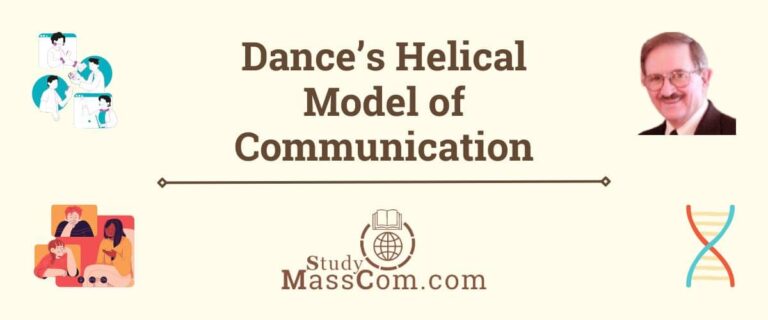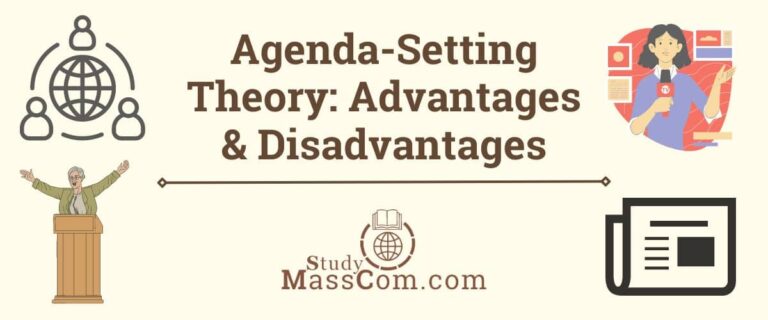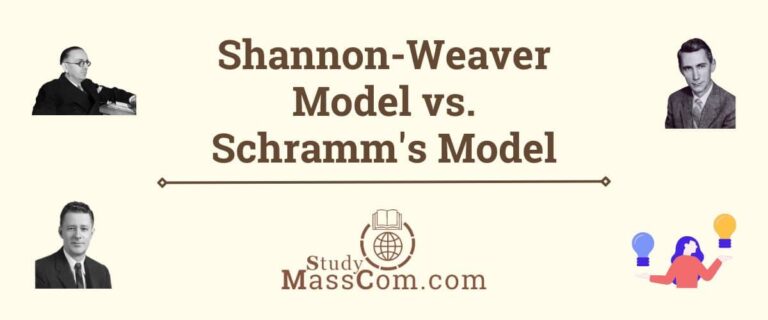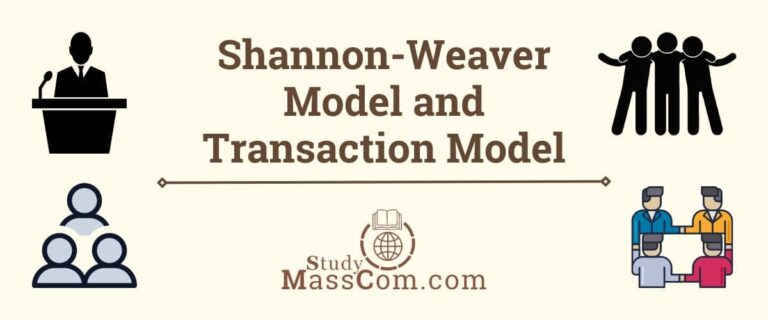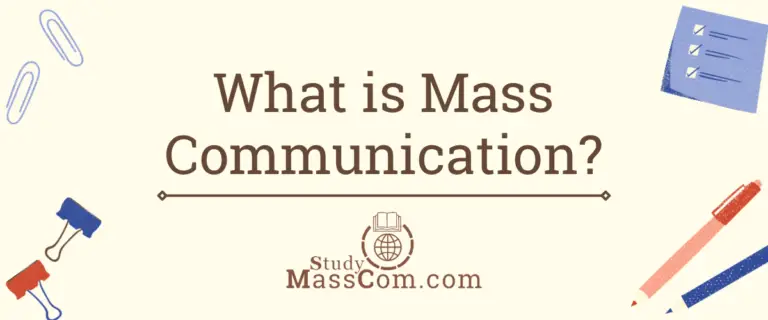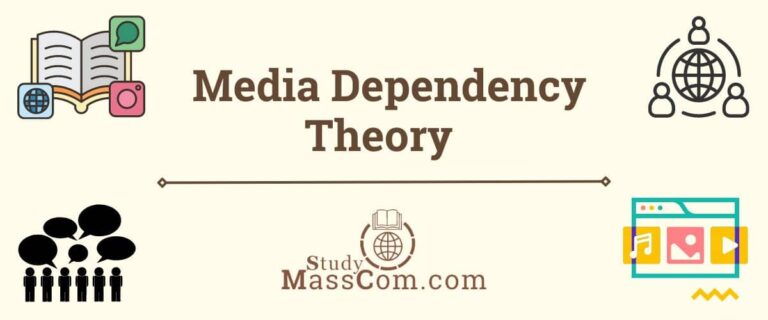Berlo’s SMCR Model of Communication: Advantages and Disadvantages
Berlo’s SMCR model of communication is a simple and widely used conceptual framework that outlines the basic elements of the communication process. Developed by David Berlo in the 1960s, this model breaks down communication into four key components: Source, Message, Channel, and Receiver (SMCR). Each component plays a distinct role in the process of transmitting information from one person (or entity) to another. Berlo’s SMCR model provides a simplified representation of the communication process and doesn’t account for all the complexities and dynamics that can occur in real-life interactions. Factors such as noise (interference that can distort the message), feedback (responses from the receiver that inform the source about the message’s reception), and context (the situational and cultural environment) play significant roles in shaping communication effectiveness.
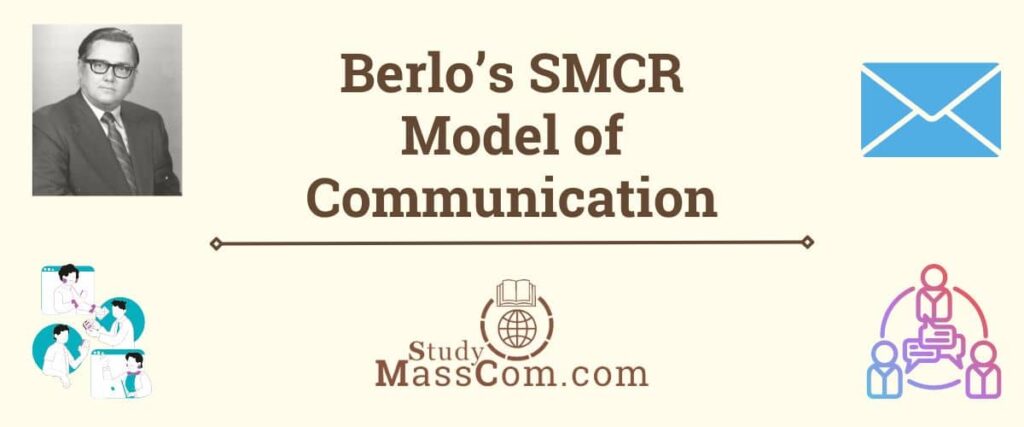
Definition of Berlo’s SMCR Model of Communication
Berlo’s SMCR Model is a theoretical framework that breaks down the communication process into four essential components: Source, Message, Channel, and Receiver. This model provides a basic structure for understanding how information is transmitted from a sender to a receiver.
The model’s acronym, SMCR, represents the sequential flow of communication: the source encodes a message, which is transmitted through a chosen channel to reach the receiver, who then decodes and interprets the message. While the model simplifies the complexities of real-world communication, it serves as a foundation for analyzing and improving communication strategies across various contexts.
Elements of Berlo’s SMCR Model
Source
The source is the initiator or sender of the communication. It could be an individual, a group, an organization, or even a machine. The source is responsible for encoding the intended message into a format that can be understood by the receiver. Encoding involves converting thoughts, ideas, or information into words, symbols, or gestures.
Message
The message is the information, idea, or content that the source wants to convey to the receiver. It can take various forms, including spoken words, written text, visual images, gestures, or any combination of these. The clarity, relevance, and effectiveness of the message are crucial for successful communication.
Channel
The channel refers to the medium or means through which the message is transmitted from the source to the receiver. Channels can include face-to-face conversations, written documents, phone calls, emails, social media, television, radio, and more. The choice of channel can significantly impact how the message is perceived and understood.
Receiver
The receiver is the intended recipient of the communication. This can be an individual, a group, or an organization. The receiver’s role involves decoding the message, which means interpreting the encoded information and trying to understand its intended meaning. Effective communication requires the receiver to accurately decode the message as the source intended.
In addition to these four elements, the SMCR model also considers the impact of noise, which refers to any interference or distractions that can disrupt the communication process. Noise can include external factors like physical noise (background sounds), psychological noise (mental distractions), or semantic noise (language barriers).
Diagram of Berlo’s SMCR Model
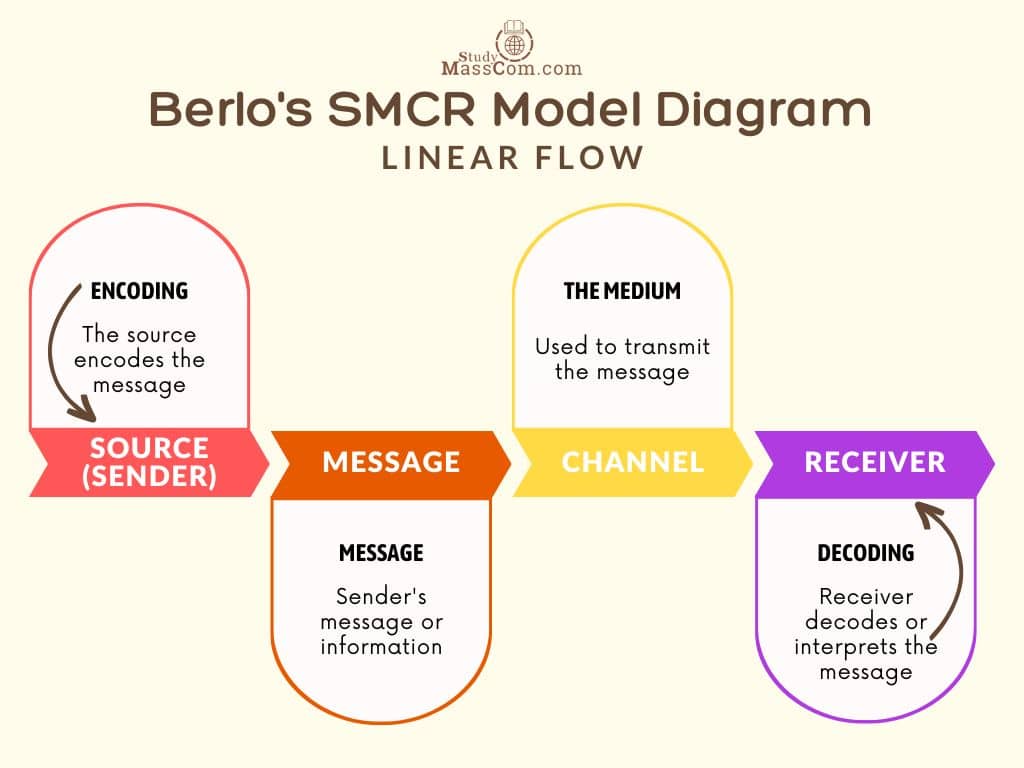
- Source (Sender): The originator of the communication, who encodes the message.
- Message: The information or content being conveyed by the sender.
- Channel: The medium or method used to transmit the message from the sender to the receiver.
- Receiver: The intended recipient of the message, who decodes and interprets it.
This linear flow demonstrates the sequence of events in the communication process, where the sender encodes the message, travels through a chosen channel, and the receiver decodes and interprets the message.
Advantages of Berlo’s SMCR Model of Communication
Berlo’s SMCR Model of Communication offers several advantages as a simple and straightforward framework for understanding and analyzing communication processes. Here are some of the key advantages of this model:
Clarity and Simplicity
The SMCR model’s structure is easy to comprehend, making it a useful tool for introducing basic concepts of communication to students, practitioners, and individuals who may be new to the field. Its simplicity allows for a clear and concise representation of the core elements involved in communication.
Explore Aristotle’s model of communication.
Foundational Understanding
The model provides a foundational understanding of the essential components of communication: source, message, channel, and receiver. This understanding serves as a starting point for more in-depth discussions and analyses of communication dynamics.
Teaching and Learning
The model is commonly used in educational settings to teach communication theories and principles. It provides a basic framework that students can build upon as they delve deeper into various communication theories, strategies, and contexts.
Analytical Tool
Berlo’s model offers a structured framework for analyzing communication interactions. It helps practitioners break down complex communication processes into manageable components, allowing them to identify potential issues or areas for improvement.
Message Design
The model highlights the importance of encoding and decoding messages. This emphasis on message design and interpretation encourages communicators to consider the clarity, relevance, and effectiveness of their messages in various contexts.
Channel Selection
By including the concept of channels, the model encourages communicators to think critically about how they choose to transmit messages. This consideration of communication channels helps ensure that messages reach the intended audience in the most effective way.
Discover the strengths and weaknesses of Lasswell’s communication model.
Applicability to Different Contexts
The SMCR model is versatile and can be applied to various communication contexts, including interpersonal, organizational, mass media, and technological communication. It provides a common language and framework for discussing communication across different settings.
Basis for Further Study
While the model is simplified, it can serve as a stepping stone for exploring more complex communication theories and models. It provides a solid foundation upon which individuals can build their understanding of communication processes.
Effective Communication Planning
The model’s emphasis on the relationship between the source, message, channel, and receiver can aid in effective communication planning and strategy development. Communicators can use the model to assess and refine their communication approaches.
Disadvantages of Berlo’s SMCR Model of Communication
While the SMCR model offers several advantages, it’s important to recognize its limitations as well. It oversimplifies the complexities of real-world communication, such as the role of feedback, context, cultural influences, and the dynamic nature of interactions. As such, the model should be used in conjunction with other theories and frameworks to gain a more comprehensive understanding of communication dynamics. Here are the key disadvantages of this model:
Lack of Feedback
One of the major criticisms of the model is its limited consideration of feedback. In real-life communication, feedback is crucial for assessing whether the message was understood as intended. The model doesn’t explicitly include a feedback loop, which is essential for effective communication.
Oversimplification
The model oversimplifies the communication process by breaking it down into only four components: source, message, channel, and receiver. Real-world communication involves a complex interplay of factors, including context, culture, emotions, and individual differences, which are not adequately addressed by the model.
Linear Nature
The model presents communication as a linear process from source to receiver. However, communication is often more dynamic and interactive, with messages being exchanged back and forth between participants. The model doesn’t capture the cyclical and iterative nature of many communication interactions.
Check out the differences between Two-Step Flow Theory and Multi-Step flow Theory.
Cultural and Contextual Factors
The model does not explicitly account for the significant influence of cultural differences and contextual factors on communication. Messages may be interpreted differently based on cultural norms, values, and backgrounds, which can impact the effectiveness of communication.
No Consideration of Noise
While noise (interference or disruptions) is briefly mentioned as a factor in some explanations of the model, it is not fully integrated into the framework. In reality, noise can significantly affect the encoding, transmission, and decoding of messages, which can lead to misunderstandings.
Passive Receiver Role
The model portrays the receiver as a passive recipient who simply decodes the message. In reality, receivers actively interpret and make sense of messages based on their own experiences, beliefs, and perceptions. The model doesn’t fully capture the dynamic nature of this process.
Read about the Magic Bullet Theory, its advantages and disadvantages.
Technological Advances
The model was developed before the advent of modern communication technologies like the internet and social media. These technologies have introduced new channels and complexities that the model needs to account for.
Discover the differences between traditional media and new media.
Limited Contextualization
The model doesn’t address the importance of considering the broader communication context, such as the social, psychological, and historical factors that can influence how messages are perceived and understood.
Criticized for Linearity
The linear nature of the model has been criticized for not accurately representing the way communication often involves simultaneous encoding and decoding processes, as well as multiple channels and interactions happening at once.
In summary, while Berlo’s SMCR Model provides a useful starting point for understanding communication, it should be used with an awareness of its limitations. It is most effective when supplemented with other communication theories and frameworks that address the complexities and nuances of real-world communication interactions.
Explore Cultivation Theory, its key strengths and weaknesses.
Application of Berlo’s SMCR Model
Berlo’s SMCR Model of Communication, despite its limitations, can still be applied in various contexts and situations to enhance communication effectiveness and understanding. Here are some practical applications of the SMCR model:
Teaching and Education
The SMCR model is often used as a foundational tool for teaching communication concepts in classrooms and educational settings. It helps students grasp the fundamental elements of communication before delving into more advanced theories.
Communication Planning
The model can aid in the planning and development of effective communication strategies. Communicators can use the model to analyze the source, message, channel, and receiver aspects of their communication and make informed decisions about how to structure and convey their messages.
Message Design
The model highlights the importance of encoding messages clearly and effectively. When creating written or verbal content, communicators can use the SMCR framework to ensure that their messages are well-structured, relevant, and easy to understand.
Channel Selection
In choosing communication channels, whether for marketing, advertising, or internal communication within an organization, the SMCR model can help guide the selection process. Communicators can consider which channel is most suitable for reaching their target audience and conveying their intended message.
Interpersonal Communication
The model can be applied in everyday conversations and interactions. Individuals can use the SMCR framework to be more mindful of how they encode and deliver messages, as well as how they interpret messages from others.
Media and Advertising
Media professionals can utilize the SMCR model to assess the effectiveness of their media campaigns. They can consider how the source’s message is being transmitted through different channels and how it might be received by the intended audience.
Explore the role of media in development communication.
Public Speaking
Public speakers can use the SMCR model to structure their speeches and presentations. They can focus on encoding their message clearly, selecting appropriate channels (visual aids, speech delivery), and anticipating how their audience will decode the message.
Conflict Resolution
The model’s focus on encoding and decoding can be useful in conflict resolution scenarios. Understanding how messages are interpreted by different parties can help mediate misunderstandings and improve communication during disputes.
Crisis Communication
During crises or emergencies, the SMCR model can guide communication strategies. Communicators can ensure that critical information is encoded and transmitted accurately through appropriate channels to reach concerned parties.
Digital Communication
While the model predates digital communication platforms, it can still be applied to assess how messages are conveyed through emails, social media, and other online channels. It encourages considering the impact of technology on communication processes.
Learn about digital literacy and media literacy, in detail.
Training and Workshops
The model can be used as a framework for designing communication training programs or workshops, helping participants develop essential communication skills and strategies.
Cross-Cultural Communication
While the model doesn’t explicitly address cultural nuances, it can still be applied as a starting point for cross-cultural communication awareness. It encourages considering how messages might be received and decoded differently in various cultural contexts.
In each of these applications, the SMCR model serves as a basic guide for understanding the core elements of communication and how they interact to facilitate the exchange of information between a source and a receiver.
Conclusion
Berlo’s SMCR model of communication stands as a foundational framework that has greatly contributed to our understanding of how information is transmitted from one entity to another. Its simplicity and clarity make it an excellent starting point for grasping the fundamental components of communication. By breaking down the process into four key elements – source, message, channel, and receiver – the model offers a structured way to analyze and discuss various communication interactions.
However, it is important to acknowledge the limitations of the SMCR model. Its linear nature oversimplifies the complexity of real-world communication dynamics, such as the role of feedback, cultural influences, contextual factors, and the dynamic nature of interactions. In today’s rapidly evolving communication landscape, the model’s lack of consideration for digital platforms and modern technologies also poses a challenge.
FAQs
David Berlo’s SMCR model of communication is a conceptual framework that simplifies the communication process into four essential components: Source, Message, Channel, and Receiver. Developed in the 1960s, the model illustrates how information flows from a sender (source) to a recipient (receiver) through a chosen medium (channel), with the message being encoded by the sender and decoded by the receiver. While the model’s simplicity aids understanding, it overlooks complexities like feedback and context, limiting its applicability in today’s multifaceted communication landscape. Nevertheless, it serves as a foundational tool for teaching, analysis, and improving communication interactions.
Berlo’s SMCR model simplifies communication into four stages: a sender (source) encodes a message, which travels through a chosen channel, then the receiver decodes the message. The sender’s intention, encoded message, and chosen channel influence the receiver’s understanding. While this basic model helps grasp communication’s core, it overlooks feedback and real-world complexities like cultural context. Despite its limitations, it provides a starting point to analyze and enhance communication effectiveness across various contexts.
Berlo’s model of communication is important as a foundational framework that introduces the fundamental elements of communication—source, message, channel, and receiver. Its simplicity aids in understanding the basic communication process and serves as a starting point for learners and practitioners. While the model’s straightforwardness has limitations, it offers valuable insights into how information is transmitted. It remains relevant for teaching communication concepts, devising communication strategies, and analyzing interactions. However, its significance is best realized when combined with other theories and approaches to account for the complexities of real-world communication scenarios.

